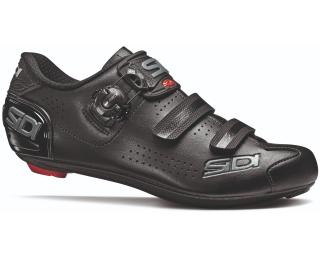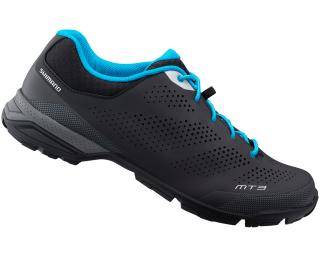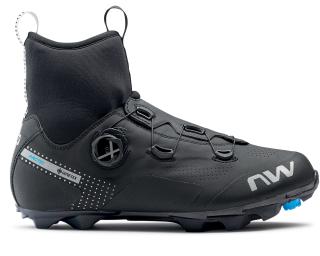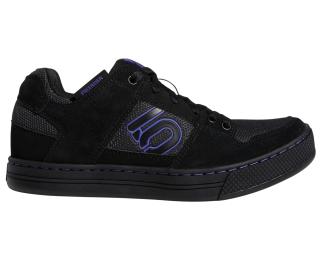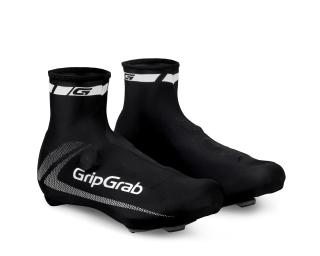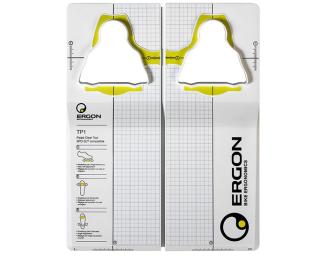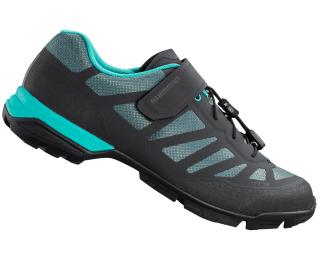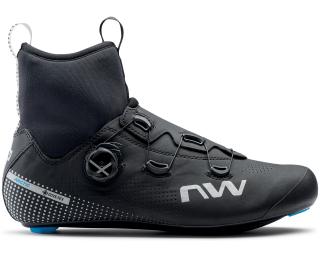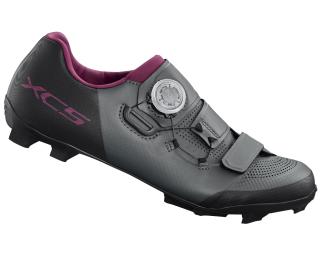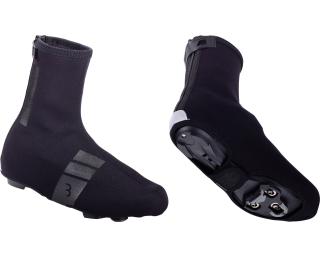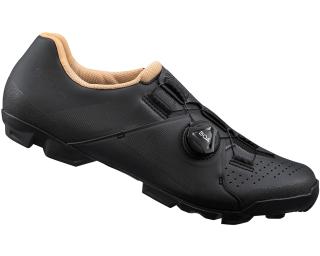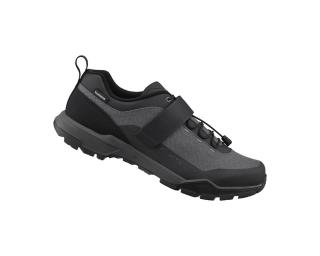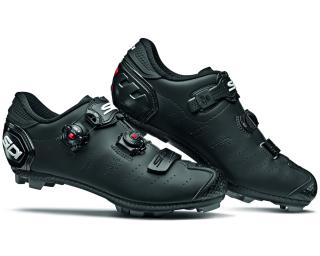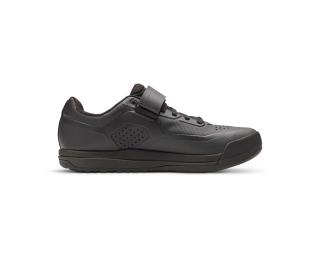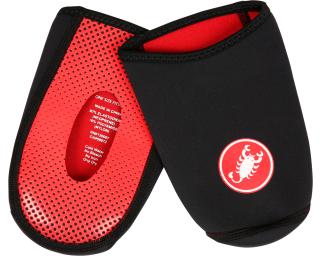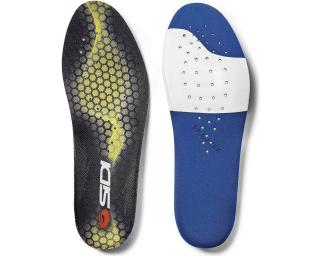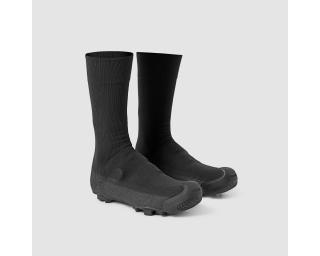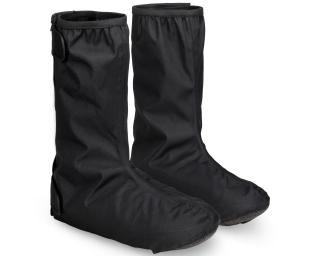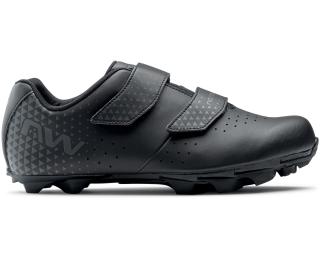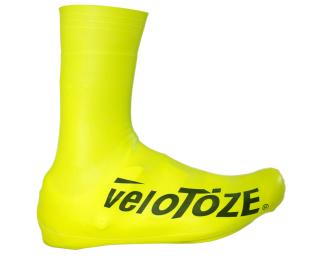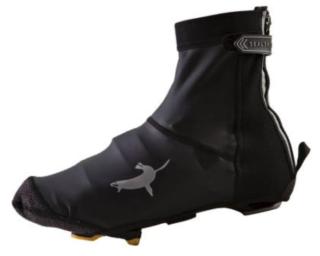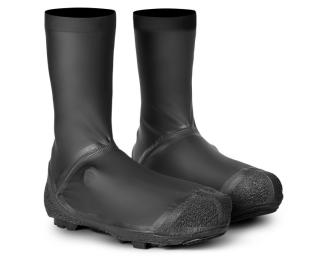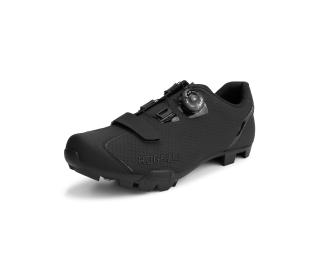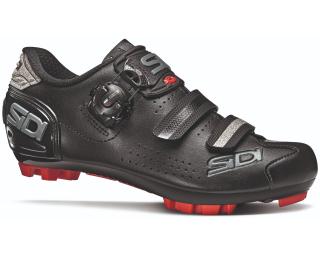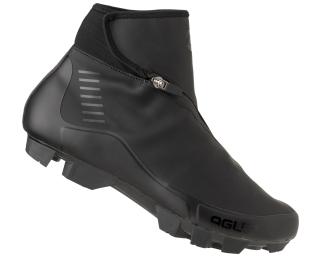Cycling Shoes
156Cycling shoes for road bikes and mountain bikes are perhaps the most important apparel to have. They are the central spot where all your power is transmitted to the bike. Good shoes are therefore essential. We have of course both mountain bike shoes and road bike shoes. If you prefer alternatives to clipless shoes, we also have plenty of options for you.
Read more
Categories
Brands
Sorted by
Are you satisfied with our product range?
Cycling Shoes | We specialise in cycling shoes!
What is the difference between MTB and road cycling shoes?
Mountain bike shoes have additional knobs on the sole for extra grip and the plate is recessed into this profile. This makes it easier to walk on them, which comes in handy because while mountain biking, you usually have to dismount a bit more often and thus have to walk. The downside of MTB shoes is that they are a bit heavier and less stiff. Road cycling shoes are stiffer and the cleat is larger hence the power transfer is better and cycling becomes more comfortable as the contact surface is larger.
What is the advantage of a BOA closure?
With a cycling shoe with a dial closure, you can determine very precisely how tight the cycling shoe will be. By turning the dial, a wire is stretched tighter over the shoe without pinching. This wire follows the construction of the foot, resulting in optimal pressure distribution across the instep. This makes it easy to tighten or loosen your MTB or road bike shoe while cycling.
Which cleats should I choose for my cycling shoes?
If you have clipless pedals on your bike, you will need to buy the right shoes to go with them. Just buying a pair of shoes will not be enough. You will also need cleats underneath that clip into the pedals. There are cleats for mountain bike and for road bike. Road bike cleats are easy to recognise because they are usually a bit larger than mountain bike cleats. Please note that which cleats you need also depends on the brand and model of the pedals you have. More often that not, brand new pedals come with a set of cleats.
What does the stiffness index of a cycling shoe mean?
This indicates how rigid the soles are. Each manufacturer has its own index, we divided our assortment in three categories: Flexible, Moderate and Rigid. A flexible sole is usually made of nylon only with sometimes a small additive for extra rigidity. A moderately stiff sole is reinforced with carbon and a rigid sole is made entirely of carbon. The stiffer the sole in your cycling or MTB shoe, the better the power transfer. Optimal power transfer is essential when you want to go as fast as possible. However, you do sacrifice a bit of comfort with a rigid sole.
How tight should cycling shoes be?
Cycling shoes should be quite tight, but they should not feel painful. If they are too loose, they will move while cycling and you will not be able to put in as much power. If they are too tight, it can lead to pain and even injury to the feet. It is important to make sure the shoes fit properly before you start riding your bike. Make sure the shoes are not too wide or too narrow for your feet and that there is enough room for your toes. You can also adjust the tension on the shoes if your shoes have a dial closure. If you're unsure about the right size, it's best to visit one of our Superstores to ask for advice or to try on different sizes before buying a pair.
What are the best cycling shoes?
It is difficult to say what the best cycling shoes are. It all depends on which brand you prefer or how much money you want to spend on them. One guarantee we can give: all our cycling shoes are of very high quality, so you will always make a good choice in terms of brand. We have several good brands in our range, such as:
How do cycling shoes work?
Cycling shoes are specially designed to be used while cycling. They have special soles with increased stiffness to improve the transfer of power from the foot to the pedals. This allows you to pedal more efficiently and apply more power while biking. Most cycling shoes are clipless, which mean that they have cleats that clip into your pedals. This ensures that your feet stay in place while riding and that you can apply maximum power.
what size cycling shoes do I need?
To determine the right size cycling shoes for you, it is best to measure your foot with a tape measure or a shoe size gauge. You can do this by following these steps:
- Put on a thin sock before measuring your foot as this can improve the accuracy of the measurement. On top of that, wearing socks is in fact a lot better in terms of hygiene.
- Place your foot on a piece of paper and draw a line behind your heel and one in front of your biggest toe.
- Measure the distance between the two lines in centimetres. This is the length of your foot.
- Then look at the manufacturer's size chart of the cycling shoes you want to buy. Find the right size according to the length of your foot.
Find out more on our Blog
 Nederland
Nederland België
België Deutschland
Deutschland United Kingdom
United Kingdom Finland
Finland Ireland
Ireland Luxembourg
Luxembourg Portugal
Portugal Poland
Poland Österreich
Österreich France
France España
España Italia
Italia Sverige
Sverige Danmark
Danmark











































































































































































































































